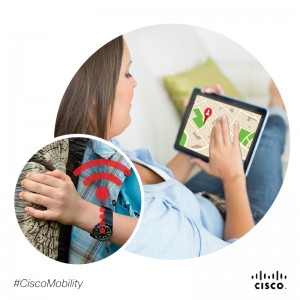How fascinating is it that in today’s world, a parent can connect to an office network and still remain linked to a child via mobile device?
I recently came across a New York Times article that discussed how mobility is transforming our daily lives and the safety of our loved ones. According to the article, new innovations such as Filip Technologies’ watch and Trax, can help monitor the whereabouts of young children and pets.
loved ones. According to the article, new innovations such as Filip Technologies’ watch and Trax, can help monitor the whereabouts of young children and pets.
As the growth of mobility enables more wearable devices and applications that include GPS and Wi-Fi features, it is becoming increasingly easier for us to remotely monitor our children’s safety while managing daily tasks. Any parent would consider this a win-win.
In light of the capabilities of this type of technology, Gartner predicts that wearable electronics will be a $10 billion dollar industry. There is significant value at stake for organizations that can successfully respond to our rapidly changing mobile landscape by bridging enterprise and service provider networks through an architectural approach to mobility.
How can an agile, secure and durable network address common concerns about how mobility and wearables will respond to IT networks?
Manage Bandwidth
One area of concern that involves the growth of mobility, and specifically wearable technology is the issue of bandwidth. As mobile data traffic surges and the number of smart watches and smart shoes in the workplace rise, how will this increase impact your infrastructure?
A network is equipped to appropriately scale devices on the network will be essential as the number and types of connected devices increase in an Internet of Everything world. Enterprise networks and service providers must work together to best manage bandwidth and costs associated with network speed.
Thwart Threats
As the number of connected devices and people increase, the potential for malware to attack will always remain. In a recent Wired article, Ennio Carboni discussed the possibility of wearables to “wear out” a network. Carboni stated:
“For those of you who find BYOD to be a challenge, consider the exponential impact wearable technology will have… potentially delivering nasty malware anywhere it wants to go.”
While a secure network can’t remove all possibility of infrastructure threats, it can help thwart them in a very real and tangible way. For example, a Cisco-developed flexible model used to support mobile devices applied more security to a device based on network access. An infrastructure that can support this type of flexibility and scalability is vital in this process.
As IT teams look to develop and implement 2014 plans, leaders should consider how a stable and secure network can significantly impact the future of mobility. Through an architectural approach to a mobile infrastructure, organizations can enable more wearable devices and applications, like those built with child safety in mind, to help connect parents to kids, and kids to safety.
Join the conversation, follow @Cisco_Mobility on Twitter, #FutureOfMobility.
Additional Information:
- Cisco Mobility
- Cisco Intelligent Network
- More of my blogs can be found here.


It is very cool technology.It provides the security of our children.
Thanks.
very good technology
This is really good technology.